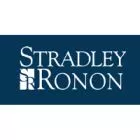The Protocol and Supplement
On October 23, 2020, the International Swaps and Derivatives Association, Inc. ("ISDA") published and opened for adherence the ISDA 2020 IBOR Fallbacks Protocol (the "Protocol"). The Protocol is intended to provide parties to Protocol Covered Documents – which term includes ISDA Master Agreements, Master Repurchase Agreements, Master Securities Loan Agreements and transaction confirmations with respect to each – with an efficient way to amend such documents in order to address the cessation of certain benchmark rates. But the Protocol applies well beyond the standard documents listed above, and parties should be aware that it can be used to amend nearly seventy-five different Protocol Covered Agreements as set forth within the Additional Documents Annex. The Protocol does not apply to cleared derivatives transactions; however, central counterparties are likely to incorporate Protocol provisions within their rules to achieve the same result. As with prior ISDA protocols, the Protocol is structured to allow each adherent to amend Protocol Covered Documents across its counterparties through the submission of a single adherence letter.
In conjunction with its publication of the Protocol, ISDA has also published the IBOR Fallbacks Supplement to the 2006 ISDA Definitions (the "Supplement"). The Supplement, which is scheduled to take effect on January 25, 2021, will operate to amend the 2006 ISDA Definitions as well as prior iterations thereof (collectively, the "Definitions") to include new rate fallback provisions with respect to various LIBOR and other IBOR benchmarks. While people often equate the Protocol to the anticipated discontinuance of LIBOR at the end of 2021, the Protocol and Supplement actually address the potential discontinuance of five currency-specific LIBOR rates as well as eight other IBOR rates (collectively, the "IBOR Rates") and provide a tiered waterfall of rate fallbacks with respect to each. Once the Supplement becomes effective, the new rate fallback provisions will apply to all subsequent transactions which incorporate the Definitions. As for existing transactions, the new fallback provisions can be applied through adherence to the Protocol by the parties to such transactions.
Adherence to the Protocol also operates to amend any existing transaction confirmations wherein the adherents have been "deemed" to have entered into a Protocol Covered Document. In addition, the Protocol may be used to amend any Credit Support Document to the extent that it incorporates the Definitions or references any of the IBOR Rates included within the Supplement. The result being that for any Credit Support Document which provides for the payment of interest with respect to cash collateral at any of the IBOR Rates, the fallbacks would apply should such rate ever cease to be provided.
Fallback Rates
Prior to the effective date of the Supplement, the Definitions provide that fallback rates should be determined by a poll of banks conducted by the calculation agent. Recently, however, banks have become less willing to participate in such polls, and with the permanent discontinuance of certain IBOR Rates on the horizon, the industry determined that a new approach was required which would provide greater certainty and which would avoid the calculation agent having to poll rate quotations for multiple calculation periods. Upon becoming effective, the Supplement will provide a tiered fallback approach with respect to each IBOR Rate. The first tier of the fallback will apply upon such a rate not being published by the designated source (i.e. Reuters screen) but absent an Index Cessation Event – in other words, this first tier will apply upon either a temporary discontinuance of the rate publication or prior to the formal announcement of the permanent discontinuance of such IBOR Rate. During this temporary or interim period, the IBOR Rate for a transaction under a Protocol Covered Document would be such IBOR Rate as disclosed by the administrator of such rate for the designated maturity of the transaction on the applicable reset date (as opposed to the rate published by the rate source). If the IBOR Rate is not disclosed by the administrator, the fallback rate would be a rate formally recommended by the administrator. Only when that rate is also unavailable would the determination revert to the calculation agent to determine in a commercially reasonable manner, taking into consideration rates implemented by central counterparties and/or futures exchanges with trading volumes in derivatives or futures that reference the applicable IBOR Rate.
The second tier of the fallback with respect to each IBOR Rate applies upon the occurrence of an Index Cessation Event, which is defined within the Protocol as a public statement or publication of information by or on behalf of the administrator, central bank or resolution authority of an IBOR Rate, as applicable, announcing that it has ceased or will cease to provide such rate permanently, or in the case of LIBOR rates only, that such rate will no longer be representative of the underlying market that such rate is intended to measure. The effective date of any Index Cessation Event will be the first date on which the applicable IBOR Rate is not provided, or, in the case of LIBOR rates only, the earlier of the date on which the applicable LIBOR rate is non-representative or the date upon which such LIBOR rate is no longer provided.
Upon the Index Cessation Event becoming effective, the tiered fallback rates with respect to the applicable IBOR Rate will be triggered. For example, if we were to assume a transaction governed by a Protocol Covered Document that referenced USD-LIBOR-BBA (which appears on Reuters Screen LIBOR01), upon the effective date of the Index Cessation Event, the rate for any reset date occurring two or more London banking days after such effective date would be the Fallback Rate (SOFR) – which is defined within the Supplement as the term adjusted Secured Overnight Financing Rate ("SOFR") plus the spread relating to U.S. Dollar LIBOR for the designated maturity as provided by Bloomberg Index Services Limited. If an Index Cessation Event were to occur with respect to Fallback Rate (SOFR), the next rate on the tiered waterfall would be the SOFR administered by the Federal Reserve Bank of New York. From there, the waterfall provides for reference to the Fed Recommended Rate which is defined within the Supplement as the rate recommended as the replacement for SOFR by the Federal Reserve Bank of New York, then onto the Overnight Bank Funding Rate, and finally, the FOMC Target Rate, which is defined within the Supplement as the short-term interest rate target set by the Federal Open Market Committee and published on the Federal Reserve's website. With a few limited exceptions, each fallback rate will be adjusted with a spread published by Bloomberg which will be based upon data from the historical period and in accordance with the Bloomberg IBOR Fallback Rate Adjustments Rulebook. For purposes of this Client Alert, our goal was not to provide a detailed analysis with respect to any of the foregoing rates, but rather, to illustrate how multiple fallback rates are incorporated with respect to each IBOR Rate.
Adherence
A party that wishes to adhere to the Protocol can do so by executing and submitting online the standard form of adherence letter through the "Protocols" section of the ISDA website at www.isda.org. Of particular importance to investment advisers, adherence to the Protocol can be made by an agent acting on behalf of one or more advised accounts. An investment adviser may adhere on behalf of: (i) all of its advised accounts; (ii) a subset of its advised accounts which it identifies on an online platform available generally to participants within the swaps industry such as ISDA Amend (a "Platform"); or (iii) all advised accounts with the exception of certain clients which it identifies on a Platform. In addition, ISDA has taken a slightly different approach with this Protocol and will allow investment advisers to elect within their adherence whether they are adhering with respect to all Protocol Covered Documents which they entered into on behalf of the underlying advised account, or alternatively, with respect to all Protocol Covered Documents to which the underlying advised account is party to – in other words, a "general agent" adherence option. An investment adviser seeking to follow the latter approach will be required to send evidence of authority with respect to such agency to each of its adhering counterparties upon request. For investment advisers with confidentiality concerns, the Protocol also provides for a mechanism whereby an investment adviser can deliver a counterparty-specific account list via the Platform should it wish not to disclose its entire list of underlying advised accounts to any specific counterparty.
Within an adherence letter, the adhering party is required to provide only its contact information, and if such adhering party is an investment adviser or agent adhering on behalf of its advised accounts, how it wishes to designate which advised accounts it is acting on behalf of. In addition, any investment adviser or agent must also elect whether it wishes to proceed with Option 1, whereby it adheres on behalf of its advised accounts with respect to Protocol Covered Documents which it has entered into as agent on behalf thereof, or alternatively, whether it wishes to proceed with Option 2, whereby it adheres on behalf of its advised accounts with respect to all Protocol Covered Agreements to which such advised accounts are party to, irrespective of whether such investment adviser or agent entered into such Protocol Covered Document on behalf of such advised account. No adjustments may be made to the text of the form adherence letter. The provisions included within the Protocol and the Supplement will become effective and operate to amend the applicable Protocol Covered Documents upon the later of January 25, 2021 and the date on which the second party adheres to the Protocol. As with prior ISDA protocols, there is a $500 fee in connection with the submission of each adherence letter.
Other Considerations
Parties may opt to forego submission of an adherence letter, and instead, proceed bilaterally with each counterparty to a Protocol Covered Document. To that end, ISDA has developed both long-form and short-form bilateral amendment templates. The long-form template sets out the terms of the attachment to the Protocol in full, whereas the short-form template cross-references the provisions of the attachment. Parties should keep in mind that bilateral incorporation of Protocol terms will require that separate documentation be put in place with each counterparty for which a Protocol Covered Document is in effect. Conversely, parties that have incorporated the Supplement via adherence to the Protocol may turn off any provision of the attachment or Supplement by expressly doing so within a Protocol Covered Document (or an amendment thereto). In determining whether to adhere to the Protocol or proceed bilaterally, parties with non-standard interest rate terms should closely review their agreements to determine whether the amendments made via the Protocol will fully preserve the economic intent of the original transaction.
Over the past several months, industry commentators have considered whether the discontinuance of LIBOR would be pushed back given the current economic issues caused by the global pandemic. Some argue that SOFR is not an adequate replacement for USD-LIBOR. Others cite as support for a delay the fact that the Federal Reserve recently pegged its Main Street Lending Program to USD-LIBOR. Nonetheless, the U.K. Financial Conduct Authority has been steadfast in moving forward and insistent that the discontinuance of LIBOR will occur at the end of 2021. Accordingly, parties to transactions governed by Protocol Covered Documents, as well as investment advisers and agents who act on behalf of those parties, should be developing their plans now in terms of how to proceed.
Parties should consider whether they want to incorporate the fallbacks through bilateral amendment of trading documentation or through adherence to the Protocol. In making that determination, they should be cognizant of the broad list of Protocol Covered Documents to which the Protocol applies. Given that the Protocol does not apply to loans or other cash-market transactions, parties that use interest-rate swaps to hedge risk in connection with other transactions should consider whether the fallback rates would result in a mismatch with respect to the floating-rate they seek to hedge (i.e., whether there is a different fallback approach with respect to the hedged risk). Investment advisers should consider whether they have the authority to adhere and which option they will pursue with respect to the submission of an online adherence letter. Now is the time to act to ensure there are no disruptions upon the discontinuance of an IBOR Rate.
The content of this article is intended to provide a general guide to the subject matter. Specialist advice should be sought about your specific circumstances.



